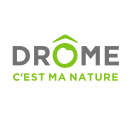
Saint-Marcel-lès-Valence
This agglomeration was divided into 4 communes, Bourg-Lès-Valence, Châteauneuf-sur-Isère, Alixan and Valence, which remained divided until July 1, 1850, when Saint-Marcel became a commune in its own right, attached to the canton of Valence.
What to see:
-La Chapelle de Surel: former church of Saint Marcel de Javaisan: Part of Saint Marcel's history is built around this church, whose origins date back to the 11th century. But in 1860, the church was in poor condition and services were transferred to the new church. It was rented to a grain and fodder merchant. In 1922, it became a village hall for meetings, conferences and concerts. By the early 1930s, the church had fallen into disrepair, and the roof and walls were deteriorating. In 1938, the French government moved in the building for the army's fuel service, which converted it into housing, offices and technical premises. In 1982, it was bought by the city and converted into a mini-theater.
-Saint-Marcel de Javaisan church: Construction began in 1860, but the spire had to be lowered for strength reasons. Around 1890, the vault developed cracks and was reinforced with metal tie rods. In 1910, the church was temporarily closed for repairs. In 1958, the vault was demolished, the walls lowered and the roof rebuilt to its former shape. The nave lost 6 m of its length, and the inauguration took place in 1959. At the end of 1970, the false ceiling was replaced by wood panelling and ceiling, and the porch was built.
-Funerary, memorial and votive architecture
Statue of Notre Dame de Bon secours: Following a parish vow on August 15, 1944 to protect the village during the tragic fortnight. On August 18, 1947, the parish erected a statue of Notre-Dame de Bon Secours in front of the cemetery entrance.
Further information
Opening
All year round, daily.
Through Valence Romans Tourisme





